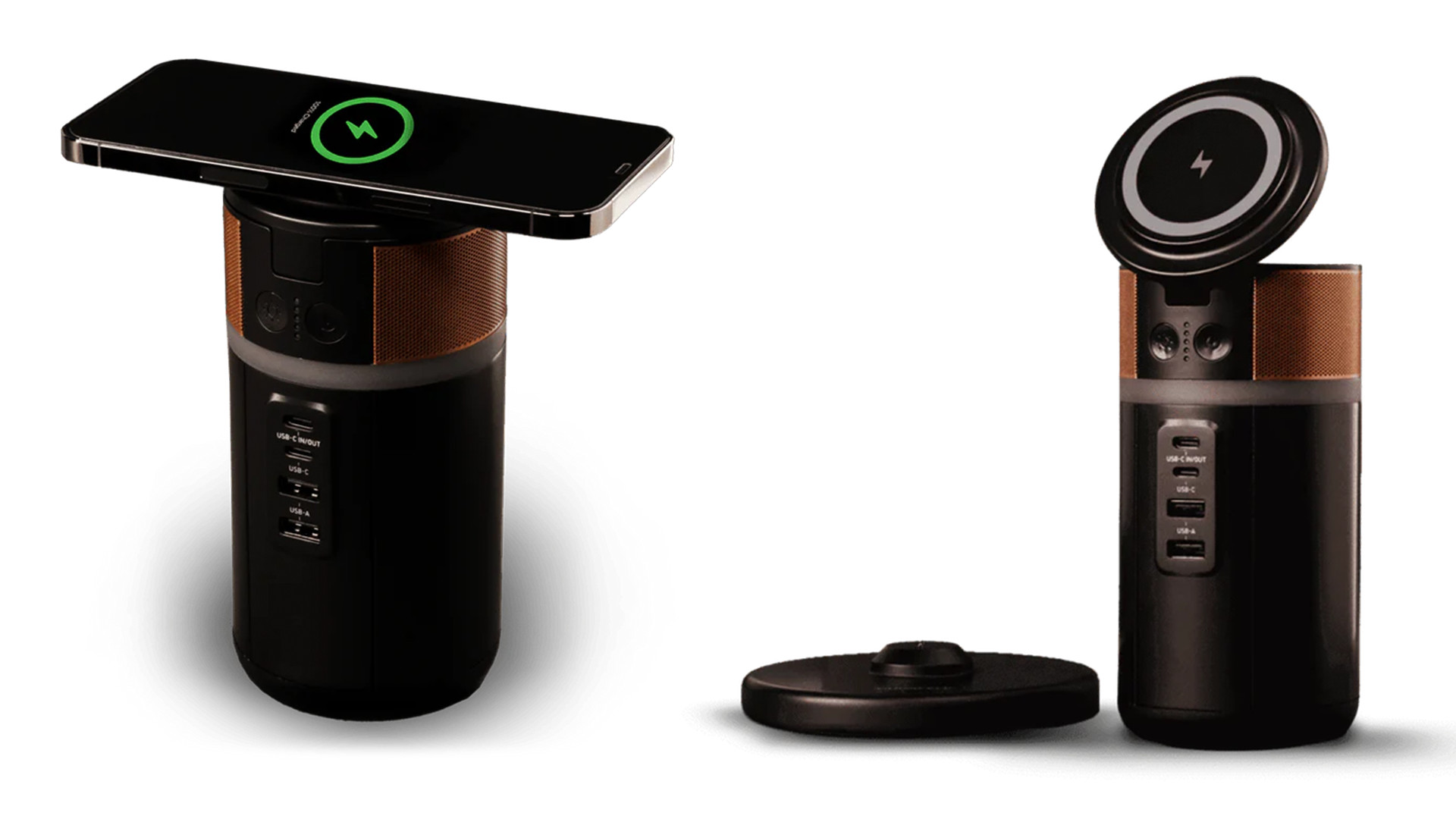Duracell's new power stations sport beefy batteries and can charge many devices
Supports laptops, smartwatches, phones, even drones

Duracell has launched a pair of portable power stations shaped after the company’s batteries that are capable of charging your laptop, smartphone, and smartwatch. They can even charge drones.
Starting with the smaller of the two, the Duracell M150 is 3.1 inches wide by 6.4 inches tall and clocks in at about two pounds. Inside is a 25,000 mAh battery that can deliver 150W of power via a wired connection. Wirelessly, it can send out 15W through its charging lid. Yes, we said lid because you can open it up revealing a little compartment where you can store USB cables. The top can open up a full 110 degrees for you to attach your smartphone and position it at the ideal angle for watching videos – assuming you have a phone with MagSafe charging.

Duracell states the tiltable lid itself doesn’t have a magnet for phones. You’ll have to supply that yourself. The company claims “external rings are available for purchase”, but we didn’t see any on the official website.
The M150 sports two USB-A ports and two USB-C ports on the back as well as a charging base. Near the top is a 360-degree dimmable ring light. Duracell explains you use the light to “brighten your face for important digital meetings" or as a simple lamp.
How it works
The way the M150 works is you first connect it to either its base or “directly into a wall outlet using a USB-C cord” in order to recharge its energy reserves. The company states it takes about two hours to recharge when connected to a wall outlet, whereas on the dock, it takes about 2.5 hours. From there, you can detach the station and then take it with you.
What’s interesting about the M150 is it can deliver a certain amount of charges depending on the hardware connected to it. For example, it can fully recharge a laptop one time, however with smartphones, it can do six times. Smartwatches can receive 50 charges, tablets get three, and drones get four. What we want to know is whether connecting multiple devices affects the station’s capabilities.
Let’s say, you connect a MacBook, iPhone, and Apple Watch to the M150. Is the station able to fully recharge the MacBook in that situation or is its performance affected because of all of the extra gadgets attached? We brought this question as well as several others to Duracell. We wanted to know if there are plans for an international launch and if it’s considering selling magnetic rings for smartphones. This story will be updated at a later time.
Get daily insight, inspiration and deals in your inbox
Sign up for breaking news, reviews, opinion, top tech deals, and more.
Bigger and possibly better
The M250 functions similarly to the M150 although it is substantially bigger, weighing 4.5 pounds and measuring 5 x 10.4-inches. The internal battery is beefier too at 60,000 mAh. It delivers 250W of power through a wired connection, but its wireless performance stays the same. The M250 keeps the same assortment of USB ports while also throwing in an outlet for power cords.
Thanks to the bigger battery, this station can offer longer charging durations. Laptops now get three charges, phones get 14, drones get nine, and smartwatches can receive 100 charges. You can purchase the M150 power station from Duracell’s website for $200 right now. The M250 retails for $300.
If you’re looking for something smaller, check out TechRadar’s list of the best portable chargers for 2023.
Update 11-08-2023: A company representative got back to us and confirmed that connecting multiple devices to a power station affects its performance. The energy from the M150, for example, will have to be "distributed across each device based on the limitation of the specific port." Also, there are plans for a global launch, but nothing is set in stone. And unfortunately, Duracell will not be selling external magnetic rings for phones. You'll have to opt for a third-party product.
You might also like

Cesar Cadenas has been writing about the tech industry for several years now specializing in consumer electronics, entertainment devices, Windows, and the gaming industry. But he’s also passionate about smartphones, GPUs, and cybersecurity.